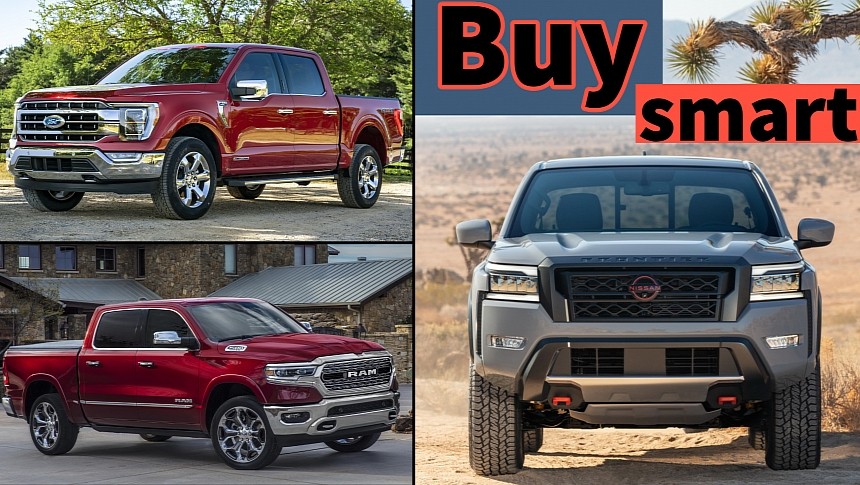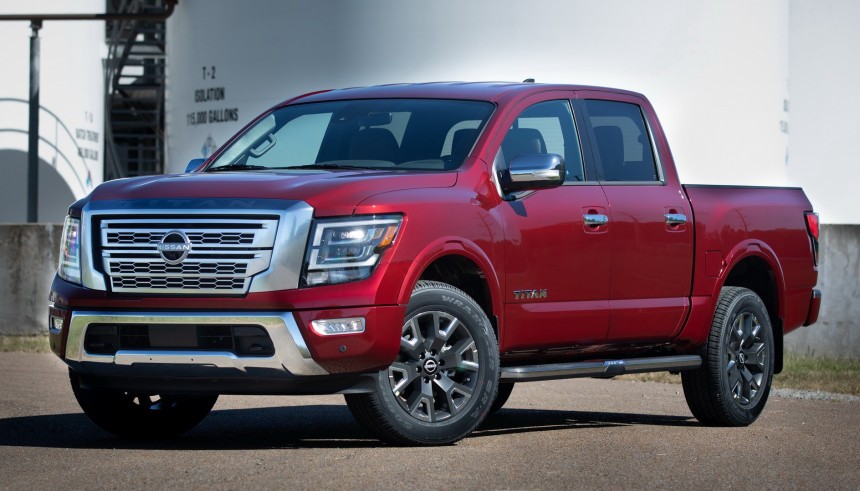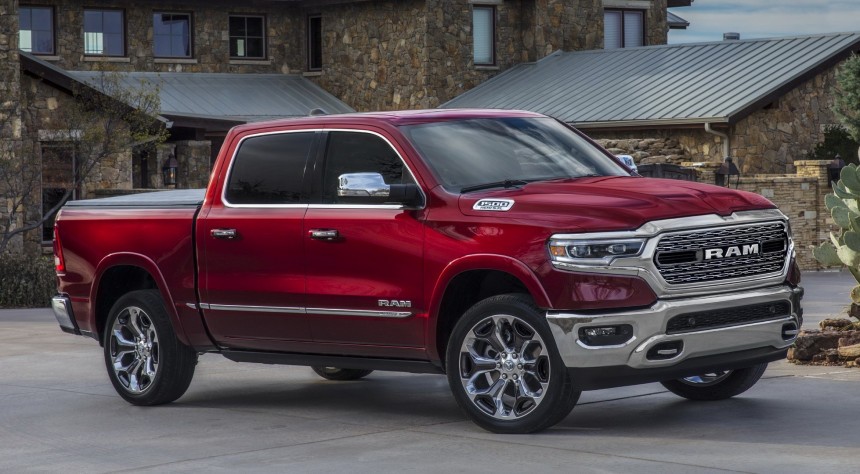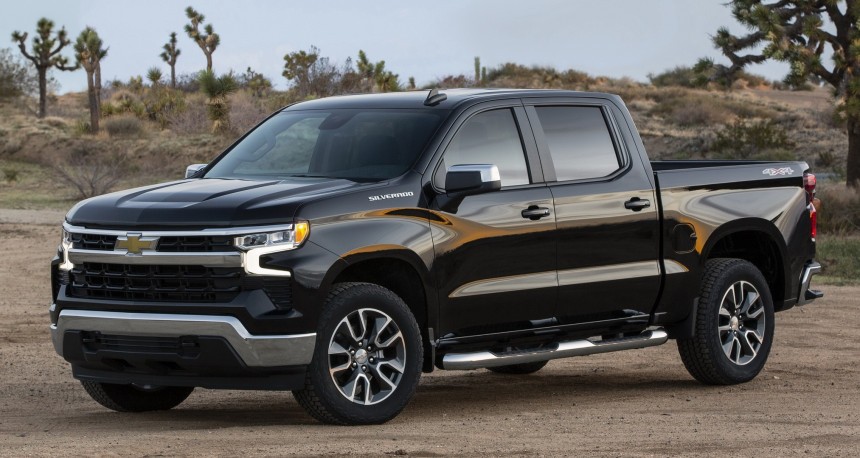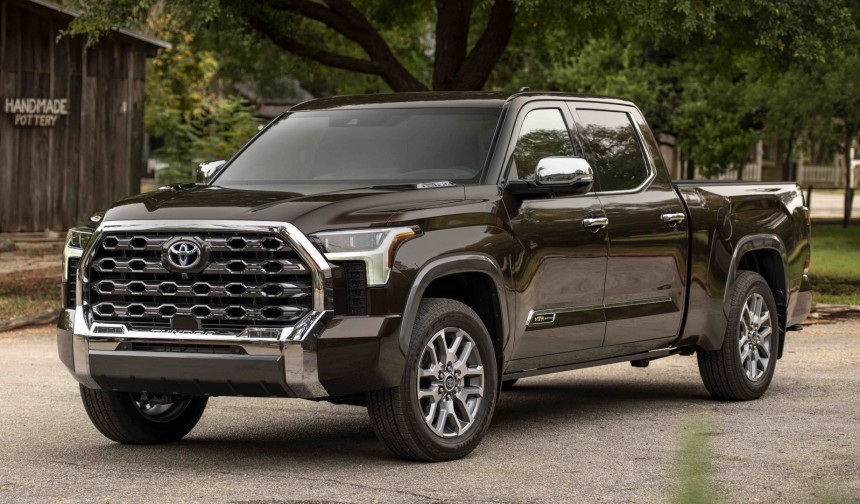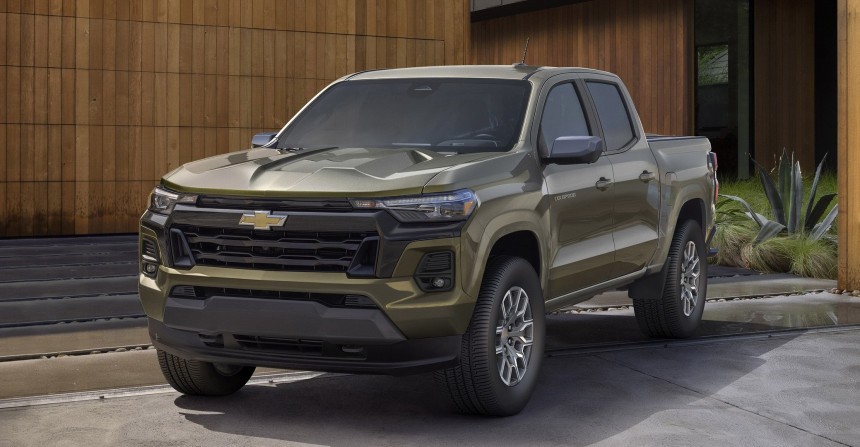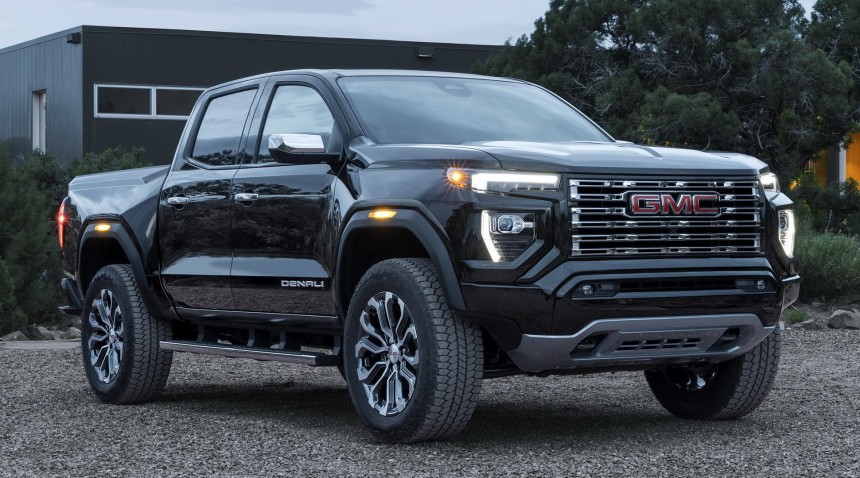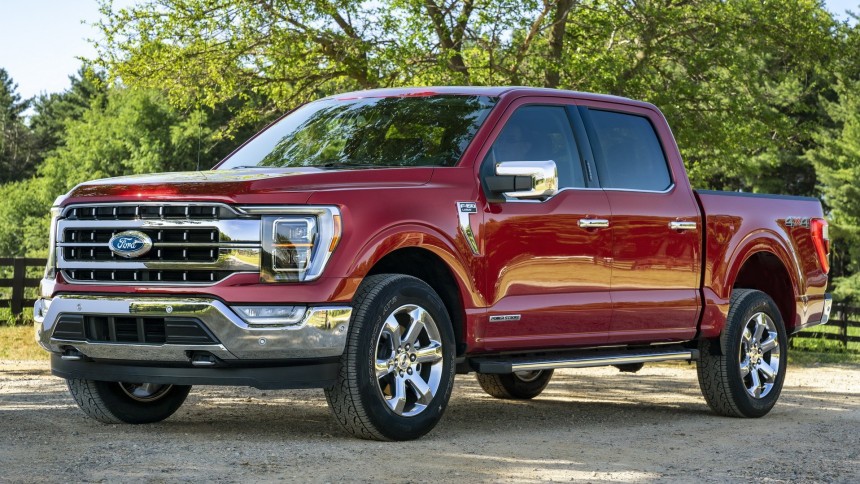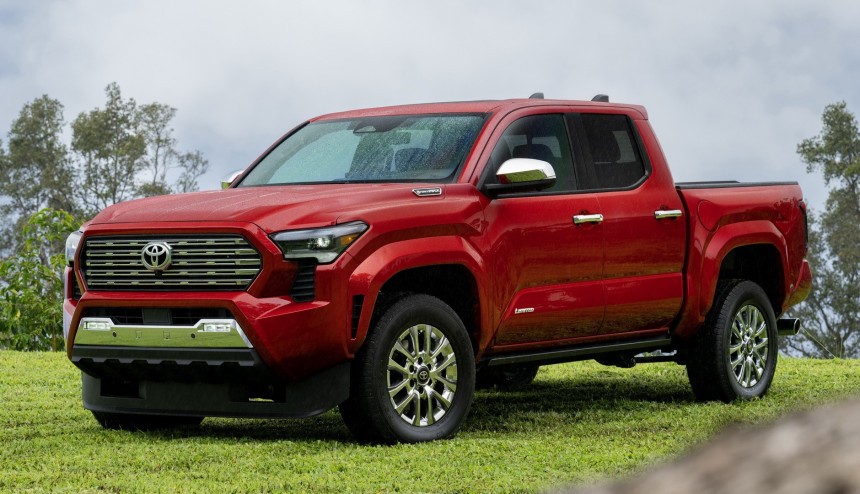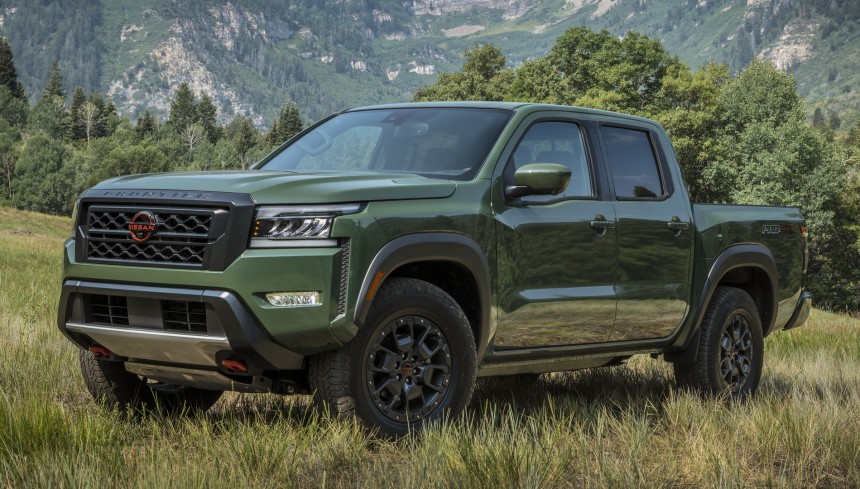There are several reasons why pickup trucks hold their value a lot better than regular passenger cars, once they hit the used market. Compared to your run-of-the-mill sedan or crossover, trucks are bigger, which means not just more practical/utilitarian, but also safer, generally speaking. They’re also more reliable from the get-go, which will always influence resale value.
Yes, both cars and trucks will immediately depreciate after leaving the dealership lot, but the numbers clearly favor the good old pickup when looking at 5-year depreciation rates. Most midsize cars will lose about 43.6% of their value over the first five years of ownership, whereas full-size and midsize trucks will only lose about 31.8% and 21.4% respectively, according to SoFi.
So, right off the bat, you’re making a smarter business decision by purchasing a truck rather than a passenger car. Of course, if you actually need the utility, then the decision becomes a no-brainer.
Anyway, since not all trucks are created equal and some brands tend to be more popular than others, we thought we’d put together a list of 10 midsize and full-size trucks in the exact order in which you’d want to buy them if your no.1 concern was depreciation. Keep in mind, we’re not taking heavy-duty trucks into account, and the no.10 truck on our list is the one with the worst resale value over a 5-year period.
Well, hello old friend. Fancy meeting you in yet another Top 10 story – the Titan was featured in our 10 Cars, Trucks and SUVs You Should Definitely Avoid Buying in 2023 piece.
Making that particular list wasn’t a good thing, hence why it’s also dead last here when it comes to depreciation (74% residuals). Mind you, this is not a bad product, but rather one that’s lacking some of the newer tech and features found in most of its rivals. It’s also not as popular of a choice, which makes perfect sense given its status as a heavy underdog in this segment.
The Titan is currently still in its second-generation, which was introduced all the way back in 2015. A mid-cycle refresh came into play in 2020, but it didn’t do too much to help sales – Nissan discontinued the Titan in Canada after the 2021 model year and come next year, the Japanese carmaker will exit the full-size truck segment completely in order to focus on building battery-electric sedans.
Thankfully, its smaller sibling, the Frontier, will be retained, which is good considering how good it is in terms of strong residuals. In the long term, I really hope Nissan will bring the Titan back to the U.S. as a fully electric full-size truck, capable of competing with the F-150 Lightning, Silverado EV and Ram REV.
I have to say, I’m as surprised as you are to see the Ram 1500 second-to-last on our list. This is an extremely popular and appealing product, now in its fifth generation. This latest model made its debut in 2019 at NAIAS in Detroit and come next year, we’re even getting a fully electric variant in the previously-mentioned REV model.
Electric mobility aside, Stellantis/Dodge did continue to upgrade the Ram 1500 throughout its life cycle, adding options such as Trailer Reverse Steering Control (for the Trailer Tow pack) or the Snow Plow Prep Package, plus better connectivity tech, with wired and wireless Apple CarPlay and Android Auto integration. These are modern trucks, and they won’t leave you wanting.
There’s not much you can fault the Ram 1500 for. It’s a genuine workhorse, capable of pulling its weight in any scenario. The only “problem” is popularity, as U.S. buyers continue to choose the likes of the Chevy Silverado and Ford F-150 over the truck formerly known as a Dodge.
You can buy into the Ram 1500 range from just $30,695, which will land you the entry level 1500 Classic specification. As for 5-year residuals, expect them to hover around the 75.6% mark. Not great, not terrible, yet you can certainly do a lot better.
With so much history behind it, the Silverado is a true stalwart when it comes to full-size pickup trucks. It’s almost as popular as the Ford F-Series, with Chevrolet having sold over 12 million units since the first-generation Silverado was introduced back in 1999.
Now in its fourth generation, having recently undergone an upgrade, the Silverado is as formidable as ever. There’s a configuration and specification for anyone, and you can even get those 3.0-liter Duramax diesel engines across more specs than ever before.
Pricing starts from around $36,000 and you’re looking at 80% residuals over 5 years – bear in mind, these numbers represent best case scenarios.
Overall, there’s not much you can say about this truck that would quantify as being negative. Sure, some people might prefer the styling of the Ram or the F-150, but others don’t. The Silverado is what you might call a safe bet, and personally I think they tend to look better than those incredibly generic F-150s.
Right now, the most exciting spec you could own is probably the Silverado EV, unveiled back in January of last year at CES 2022. It was built from the ground up as an EV pickup, utilizing the same underpinnings as the GMC Hummer EV. Meanwhile, production on the electric Silverado commenced just two months, so you can officially look forward to seeing it on the road really soon.
Fun fact – the only reason why the Tundra wasn’t originally called the T150 was because of how similar that would have been to F-150, resulting in Ford slapping Toyota with a lawsuit. Regardless, the Tundra made its debut in 1999, registering a crazy number of sales.
It was even named Truck of the Year in 2000 by a prestigious magazine, while also winning Consumer Reports’ Best Full-Size Truck award. On paper, the Tundra had everything, including Toyota’s stellar reliability aura wrapped around it – that went a long way in shifting perception, resulting in a lot of U.S. buyers choosing the Tundra over what was then the tenth-generation F-150.
Fast-forward to 2007 and the second-generation Tundra nearly took the industry by storm with its size and ultra-capable engines. Sales were good too, but ultimately not a match for what Ford and Chevy had going with the F-150 and Silverado, respectively.
Now in its third generation, the Tundra continues to be a beast. This third-gen truck was just unveiled last year, but we can safely assume that peak five-year residuals will continue to be relatively strong – around the 81% mark.
Pricing for the 2024 Toyota Tundra currently starts from just under $40k ($39,965), and you can even get it with an optional 3.4-liter twin turbocharged i-Force Max hybrid unit, producing 437 horsepower and 583 lb-ft of torque.
It’s already been established that mid-size trucks hold onto their value much better than full-size ones, so don’t be surprised to see the Chevy Colorado here at no. 6, followed by pretty much all its rivals further up the order.
The Colorado dates back to 2003, production-wise, and was designed alongside its twin siblings, the GMC Canyon and Isuzu i-Series. It shared a platform that would eventually also spawn the Hummer H3, and was available in Regular and Extended cab configurations, with a series of gasoline and diesel powertrain options.
A second-generation variant was introduced in 2011, although the North American model only landed in dealerships in 2014, boasting a completely different front fascia compared to the likes of the Holden Colorado and Isuzu D-Max. The North American model was of course meant to look a little more like the Silverado.
As for this latest Colorado, it was just unveiled last year, and it’s not only the biggest-ever iteration of this nameplate, but also the most rugged-looking. It almost makes you want to forget all about the Silverado and other full-size trucks.
With five-year residuals hovering around the 84% mark, the Chevy Colorado is as safe a purchase as just about any truck out there, and if you’re looking to “buy new”, the price is $29,200 – although I wouldn’t necessarily recommend the entry-level two-wheel drive model.
Before we get into why the Sierra is ranked above the Silverado when it comes to depreciation, let’s consider the fact that technically, the Sierra nomenclature has been around for just as long, if not longer than ‘Silverado’. Also, GMC was founded as a truck company in 1900, while Chevy only came around 11 years later as a passenger car company.
So yes, GMC is synonymous with pickup trucks, and in terms of model chronology, we’ve already had five generations of the Sierra and only four of the Silverado.
Still, it’s natural to wonder why the GMC Sierra 1500 would fare better than the Silverado 1500 in terms of 5-year residuals, with the former holding strong at just under 85%. The truth is that it’s all about brand perception, and while there’s absolutely nothing wrong with Chevy, the fact remains that GMC is more geared toward “premium” buyers.
On paper, the Silverado is technically the ever-so-slightly more versatile product, but the Sierra is the one that will typically have a more refined interior.
Today, you can buy into the Sierra 1500 range from around $37,200, and should you want/need to, you can pay as much as $74,000 on a Denali Crew Cab variant, which is powered by GM’s 6.2-liter EcoTec3 V8 engine.
Here we are, back to a mid-size pickup offering in the GMC Canyon. It’s ranked higher than its sibling, the Chevy Colorado, for the same reasons as the Sierra when compared to the Silverado.
When GMC unveiled an all-new Canyon in 2014, they made sure to price it just a bit higher than Chevy did the Colorado, seeing as how the Canyon packed more standard goodies – again, geared towards buyers with a little extra cash in their pockets.
Three trim levels were made available on those trucks, with the base model featuring a 2.5-liter Ecotec engine and a six-speed manual gearbox. The manual would later be discontinued in favor of a six-speed automatic, and come 2021, the Canyon (and the Colorado) received a much-needed upgrade.
This latest generation Canyon made its debut last summer alongside the Colorado and is currently priced from $36,900, which lands you the entry-level Elevation spec with two-wheel drive and a 2.7-liter turbocharged engine mated to an eight-speed automatic transmission.
As for its 5-year residuals, you can expect a healthy 85%, which is only marginally better than what you’d get with the Colorado. Frankly, deciding between these two trucks would be mostly nitpicking. Much ado about nothing. So, whether new or used, just get the one you fancy more and forget about the other.
The Ford F-Series is the most successful pickup truck in automotive history. Fourteen generations of these workhorses have been roaming our roads since the late 1940s, when the first-gen models were introduced. By the way, those used to be called 'Bonus-Built'.
A significant redesign wouldn’t take place until the late 50s when the third-gen truck came out. After that, the F-Series would continue to grow and grow (literally and figuratively), culminating in the fourteenth gen model come 2021.
This latest F-150 looks more like a facelift than an all-new truck. From some angles, you’d have trouble distinguishing it from the thirteenth-generation variant, which was built between 2015 and 2020. However, looks aside, the new F-150 shares only a little over 10% of its parts with its predecessor.
In terms of sales, what’s interesting is that despite its dominance, the Ford F-Series' popularity has taken a bit of a hit as of late. Last year was particularly bad, with “only” 653,957 units sold. Yes, that’s a lot, but not compared to previous years - in 2020, Ford sold 787,372 units, and in 2018, over 900,000 units found new homes.
Still, with 86.7% five-year residuals, you don’t have to worry about your F-150 digging a hole for itself in the long term. Its depreciation is on par with that of some of the best mid-size trucks out there, and that’s saying a great deal.
As for how much you’d have to spend on a brand-new 2023 F-150, roughly $35,000 will do it – but keep in mind that very few people purchase entry-level trucks, unless there’s some type of budget-friendly special edition model on sale.
It wouldn’t surprise me if Toyota were secretly prouder of the Tacoma than the Tundra, especially after boosting the former’s versatility by so much with this latest fourth-generation model.
The Tacoma first arrived on the scene in February of 1995, replacing the truck formerly known as the Hilux around the globe (less so in the United States). Compared to the latter, the Tacoma offered improved ride quality, comfort and safety, catering to U.S. buyers who often use pickup trucks as regular passenger vehicles and not simply just for commercial or off-road purposes.
Sales have looked amazing ever since the third-gen truck was introduced in 2015, peaking at 252,490 in 2021, before dipping a tiny bit to 237,323 last year. Going forward, we expect this latest model to continue dominating the segment in terms of sales, and when I say dominating, I mean it: This year, Toyota sold roughly three Tacoma pickups for every Colorado sold by Chevrolet. I know... right?
Over five years, you can expect 87.5% residuals, which is incredibly impressive. Maybe a bit unrealistic, but again, we’re aiming for best case scenarios here.
As for how much it would set you back to purchase a new 2024 Toyota Tacoma, the starting MSRP is $28,600, which lands you the Access cab SR specification, powered by a 2.7-liter four-cylinder VVT-8 engine with 159 horsepower and 180 lb-ft of torque.
The current generation Nissan Frontier is the first of its kind to be aimed specifically at the North American market, having been unveiled back in 2021.
It’s bigger than its predecessor, and by all accounts, it’s more than capable of taking the fight to the Tacoma, Colorado, Canyon or Ranger. It’s also relatively refined for a midsize truck, looks rugged and youthful, and it now packs plenty of desirable safety and connectivity features.
What’s particularly surprising is its strong residuals, at 88.5% according to CarEdge. Not many people would rather have this than a Tacoma, or a Colorado, but if the numbers are to be believed, then the third-generation Nissan Frontier is borderline depreciation-proof.
Speaking of numbers, it still can’t hope to touch the Tacoma when it comes to sales. Like I said before, no fewer than 237,323 people bought a Tacoma last year in the United States, whereas the Nissan Frontier reached a total of 76,183 customers.
Regardless, if you’re in the market for a Frontier, you’ll need to spend upwards of $29,570, which, if anything, will land you a best-in-class standard power output figure of 310 hp. Meanwhile, if you don’t mind spending light-duty full-size pickup money, you can get the Crew Cab PRO-4X configuration from $39,100, which is the highest specification available on the Frontier.
So, right off the bat, you’re making a smarter business decision by purchasing a truck rather than a passenger car. Of course, if you actually need the utility, then the decision becomes a no-brainer.
Anyway, since not all trucks are created equal and some brands tend to be more popular than others, we thought we’d put together a list of 10 midsize and full-size trucks in the exact order in which you’d want to buy them if your no.1 concern was depreciation. Keep in mind, we’re not taking heavy-duty trucks into account, and the no.10 truck on our list is the one with the worst resale value over a 5-year period.
#10. Nissan Titan
Making that particular list wasn’t a good thing, hence why it’s also dead last here when it comes to depreciation (74% residuals). Mind you, this is not a bad product, but rather one that’s lacking some of the newer tech and features found in most of its rivals. It’s also not as popular of a choice, which makes perfect sense given its status as a heavy underdog in this segment.
The Titan is currently still in its second-generation, which was introduced all the way back in 2015. A mid-cycle refresh came into play in 2020, but it didn’t do too much to help sales – Nissan discontinued the Titan in Canada after the 2021 model year and come next year, the Japanese carmaker will exit the full-size truck segment completely in order to focus on building battery-electric sedans.
Thankfully, its smaller sibling, the Frontier, will be retained, which is good considering how good it is in terms of strong residuals. In the long term, I really hope Nissan will bring the Titan back to the U.S. as a fully electric full-size truck, capable of competing with the F-150 Lightning, Silverado EV and Ram REV.
#9. Ram 1500
Electric mobility aside, Stellantis/Dodge did continue to upgrade the Ram 1500 throughout its life cycle, adding options such as Trailer Reverse Steering Control (for the Trailer Tow pack) or the Snow Plow Prep Package, plus better connectivity tech, with wired and wireless Apple CarPlay and Android Auto integration. These are modern trucks, and they won’t leave you wanting.
There’s not much you can fault the Ram 1500 for. It’s a genuine workhorse, capable of pulling its weight in any scenario. The only “problem” is popularity, as U.S. buyers continue to choose the likes of the Chevy Silverado and Ford F-150 over the truck formerly known as a Dodge.
You can buy into the Ram 1500 range from just $30,695, which will land you the entry level 1500 Classic specification. As for 5-year residuals, expect them to hover around the 75.6% mark. Not great, not terrible, yet you can certainly do a lot better.
#8. Chevrolet Silverado 1500
Now in its fourth generation, having recently undergone an upgrade, the Silverado is as formidable as ever. There’s a configuration and specification for anyone, and you can even get those 3.0-liter Duramax diesel engines across more specs than ever before.
Pricing starts from around $36,000 and you’re looking at 80% residuals over 5 years – bear in mind, these numbers represent best case scenarios.
Overall, there’s not much you can say about this truck that would quantify as being negative. Sure, some people might prefer the styling of the Ram or the F-150, but others don’t. The Silverado is what you might call a safe bet, and personally I think they tend to look better than those incredibly generic F-150s.
Right now, the most exciting spec you could own is probably the Silverado EV, unveiled back in January of last year at CES 2022. It was built from the ground up as an EV pickup, utilizing the same underpinnings as the GMC Hummer EV. Meanwhile, production on the electric Silverado commenced just two months, so you can officially look forward to seeing it on the road really soon.
#7. Toyota Tundra
It was even named Truck of the Year in 2000 by a prestigious magazine, while also winning Consumer Reports’ Best Full-Size Truck award. On paper, the Tundra had everything, including Toyota’s stellar reliability aura wrapped around it – that went a long way in shifting perception, resulting in a lot of U.S. buyers choosing the Tundra over what was then the tenth-generation F-150.
Fast-forward to 2007 and the second-generation Tundra nearly took the industry by storm with its size and ultra-capable engines. Sales were good too, but ultimately not a match for what Ford and Chevy had going with the F-150 and Silverado, respectively.
Now in its third generation, the Tundra continues to be a beast. This third-gen truck was just unveiled last year, but we can safely assume that peak five-year residuals will continue to be relatively strong – around the 81% mark.
Pricing for the 2024 Toyota Tundra currently starts from just under $40k ($39,965), and you can even get it with an optional 3.4-liter twin turbocharged i-Force Max hybrid unit, producing 437 horsepower and 583 lb-ft of torque.
#6. Chevrolet Colorado
The Colorado dates back to 2003, production-wise, and was designed alongside its twin siblings, the GMC Canyon and Isuzu i-Series. It shared a platform that would eventually also spawn the Hummer H3, and was available in Regular and Extended cab configurations, with a series of gasoline and diesel powertrain options.
A second-generation variant was introduced in 2011, although the North American model only landed in dealerships in 2014, boasting a completely different front fascia compared to the likes of the Holden Colorado and Isuzu D-Max. The North American model was of course meant to look a little more like the Silverado.
As for this latest Colorado, it was just unveiled last year, and it’s not only the biggest-ever iteration of this nameplate, but also the most rugged-looking. It almost makes you want to forget all about the Silverado and other full-size trucks.
With five-year residuals hovering around the 84% mark, the Chevy Colorado is as safe a purchase as just about any truck out there, and if you’re looking to “buy new”, the price is $29,200 – although I wouldn’t necessarily recommend the entry-level two-wheel drive model.
#5. GMC Sierra 1500
So yes, GMC is synonymous with pickup trucks, and in terms of model chronology, we’ve already had five generations of the Sierra and only four of the Silverado.
Still, it’s natural to wonder why the GMC Sierra 1500 would fare better than the Silverado 1500 in terms of 5-year residuals, with the former holding strong at just under 85%. The truth is that it’s all about brand perception, and while there’s absolutely nothing wrong with Chevy, the fact remains that GMC is more geared toward “premium” buyers.
On paper, the Silverado is technically the ever-so-slightly more versatile product, but the Sierra is the one that will typically have a more refined interior.
Today, you can buy into the Sierra 1500 range from around $37,200, and should you want/need to, you can pay as much as $74,000 on a Denali Crew Cab variant, which is powered by GM’s 6.2-liter EcoTec3 V8 engine.
#4. GMC Canyon
When GMC unveiled an all-new Canyon in 2014, they made sure to price it just a bit higher than Chevy did the Colorado, seeing as how the Canyon packed more standard goodies – again, geared towards buyers with a little extra cash in their pockets.
Three trim levels were made available on those trucks, with the base model featuring a 2.5-liter Ecotec engine and a six-speed manual gearbox. The manual would later be discontinued in favor of a six-speed automatic, and come 2021, the Canyon (and the Colorado) received a much-needed upgrade.
This latest generation Canyon made its debut last summer alongside the Colorado and is currently priced from $36,900, which lands you the entry-level Elevation spec with two-wheel drive and a 2.7-liter turbocharged engine mated to an eight-speed automatic transmission.
As for its 5-year residuals, you can expect a healthy 85%, which is only marginally better than what you’d get with the Colorado. Frankly, deciding between these two trucks would be mostly nitpicking. Much ado about nothing. So, whether new or used, just get the one you fancy more and forget about the other.
#3. Ford F-150
A significant redesign wouldn’t take place until the late 50s when the third-gen truck came out. After that, the F-Series would continue to grow and grow (literally and figuratively), culminating in the fourteenth gen model come 2021.
This latest F-150 looks more like a facelift than an all-new truck. From some angles, you’d have trouble distinguishing it from the thirteenth-generation variant, which was built between 2015 and 2020. However, looks aside, the new F-150 shares only a little over 10% of its parts with its predecessor.
In terms of sales, what’s interesting is that despite its dominance, the Ford F-Series' popularity has taken a bit of a hit as of late. Last year was particularly bad, with “only” 653,957 units sold. Yes, that’s a lot, but not compared to previous years - in 2020, Ford sold 787,372 units, and in 2018, over 900,000 units found new homes.
Still, with 86.7% five-year residuals, you don’t have to worry about your F-150 digging a hole for itself in the long term. Its depreciation is on par with that of some of the best mid-size trucks out there, and that’s saying a great deal.
As for how much you’d have to spend on a brand-new 2023 F-150, roughly $35,000 will do it – but keep in mind that very few people purchase entry-level trucks, unless there’s some type of budget-friendly special edition model on sale.
#2. Toyota Tacoma
The Tacoma first arrived on the scene in February of 1995, replacing the truck formerly known as the Hilux around the globe (less so in the United States). Compared to the latter, the Tacoma offered improved ride quality, comfort and safety, catering to U.S. buyers who often use pickup trucks as regular passenger vehicles and not simply just for commercial or off-road purposes.
Sales have looked amazing ever since the third-gen truck was introduced in 2015, peaking at 252,490 in 2021, before dipping a tiny bit to 237,323 last year. Going forward, we expect this latest model to continue dominating the segment in terms of sales, and when I say dominating, I mean it: This year, Toyota sold roughly three Tacoma pickups for every Colorado sold by Chevrolet. I know... right?
Over five years, you can expect 87.5% residuals, which is incredibly impressive. Maybe a bit unrealistic, but again, we’re aiming for best case scenarios here.
As for how much it would set you back to purchase a new 2024 Toyota Tacoma, the starting MSRP is $28,600, which lands you the Access cab SR specification, powered by a 2.7-liter four-cylinder VVT-8 engine with 159 horsepower and 180 lb-ft of torque.
#1. Nissan Frontier
It’s bigger than its predecessor, and by all accounts, it’s more than capable of taking the fight to the Tacoma, Colorado, Canyon or Ranger. It’s also relatively refined for a midsize truck, looks rugged and youthful, and it now packs plenty of desirable safety and connectivity features.
What’s particularly surprising is its strong residuals, at 88.5% according to CarEdge. Not many people would rather have this than a Tacoma, or a Colorado, but if the numbers are to be believed, then the third-generation Nissan Frontier is borderline depreciation-proof.
Speaking of numbers, it still can’t hope to touch the Tacoma when it comes to sales. Like I said before, no fewer than 237,323 people bought a Tacoma last year in the United States, whereas the Nissan Frontier reached a total of 76,183 customers.
Regardless, if you’re in the market for a Frontier, you’ll need to spend upwards of $29,570, which, if anything, will land you a best-in-class standard power output figure of 310 hp. Meanwhile, if you don’t mind spending light-duty full-size pickup money, you can get the Crew Cab PRO-4X configuration from $39,100, which is the highest specification available on the Frontier.
